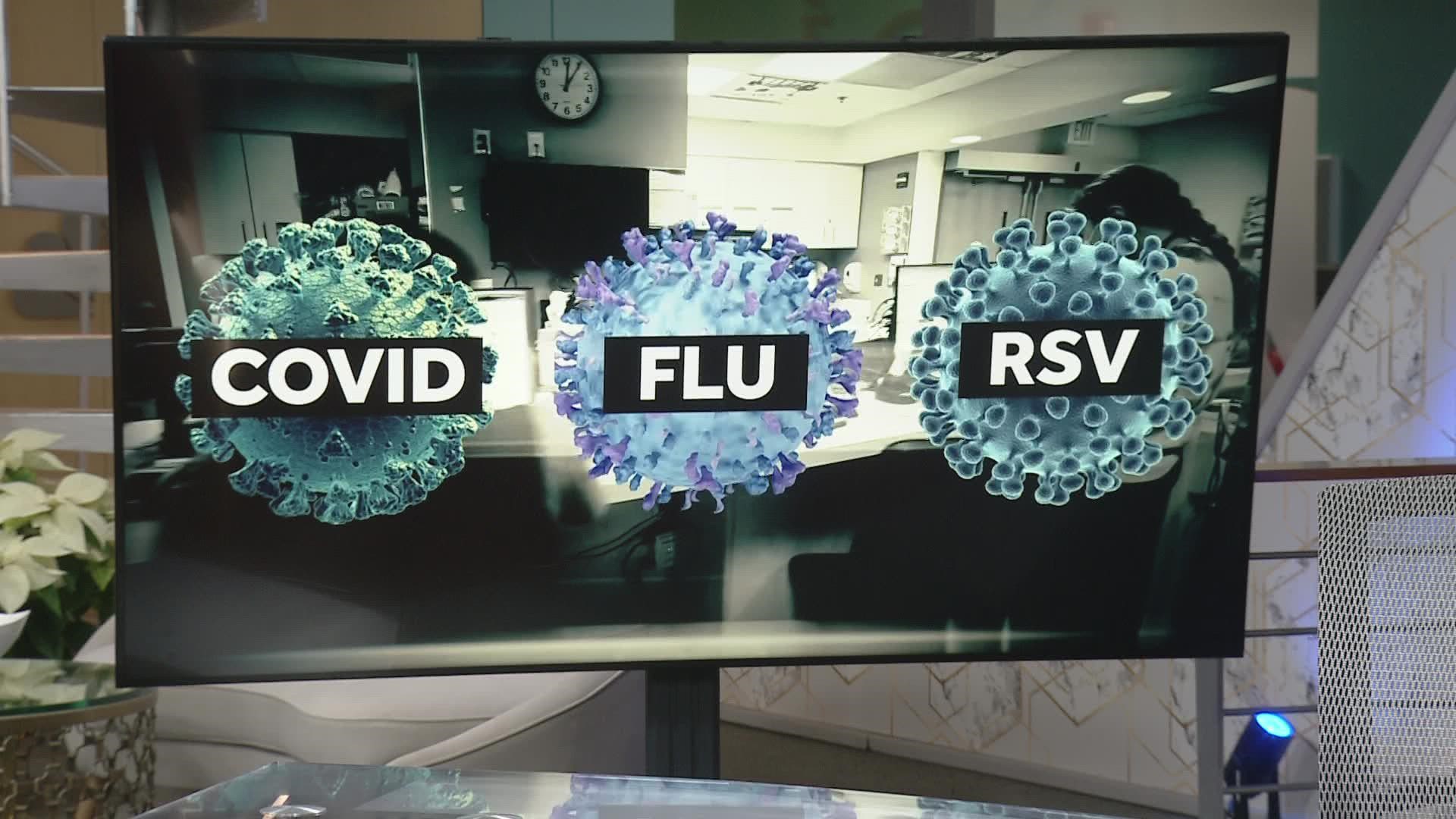CLEVELAND — It’s a veritable viral soup floating around us this season and chances are you or someone you know has been battling a respiratory virus. RSV, Influenza and COVID are responsible for most of the hospitalizations here in Northeast Ohio and around the country.
But there is a little bit of cautious hope on the horizon.
At five weeks, little Max Schumann battled severe RSV in October.
“He started breathing heavily. His eyes got really red. He was really congested. He was coughing,” says Max's mom, Samantha Schumann.
Max spent days at Cleveland Clinic Children’s.
“The smaller you are, the harder you fall unfortunately with these respiratory illnesses,” says Dr. John Carl of Cleveland Clinic Children's hospital.
Fortunately RSV cases are in a downward trend.
Influenza also arrived earlier than expected and cases skyrocketed after Thanksgiving.
Ohio is still reporting very high flu activity and Northeast Ohio has a big share of the cases. However, cases seem to be leveling off, at least in the last two weeks.
Hospitalizations went down 15% percent, but urgent care centers saw an increase and it seems most people are taking care of themselves at home. That could change over the holiday and New Year gatherings when people get together to share gifts and germs.
University Hospitals Cleveland Medical Center says it is seeing more flu patients than COVID patients.
Cleveland Clinic is seeing the opposite.
Both say cases are leveling, but they're not sure how long that will last. Also there's at least 200 other viruses and bacterial infections floating around and now we're starting to see a rise in strep cases.
Although strep is showing up at the time it's expected to be here.
What makes this season worse is the shortage of antibiotics, Tamiflu and other cold and flu medications. If you're having trouble finding treatments, talk to your pharmacist or healthcare provider about alternatives.
Meanwhile, experts say the best advice is the tried and true basic precautions. Keep washing those hands, stay home if you're sick, cover your cough and sneezes with your elbow, stay hydrated, don't touch your eyes, nose or mouth and some have gone back to wearing their pandemic masks.
There's no guarantee the peaks will cause a downward trend either. COVID continues to mutate and we might see another strain of flu pop up in January or February.
If you need one, the government is once again offering free COVID tests. Go to COVID.gov/tests to order yours.

